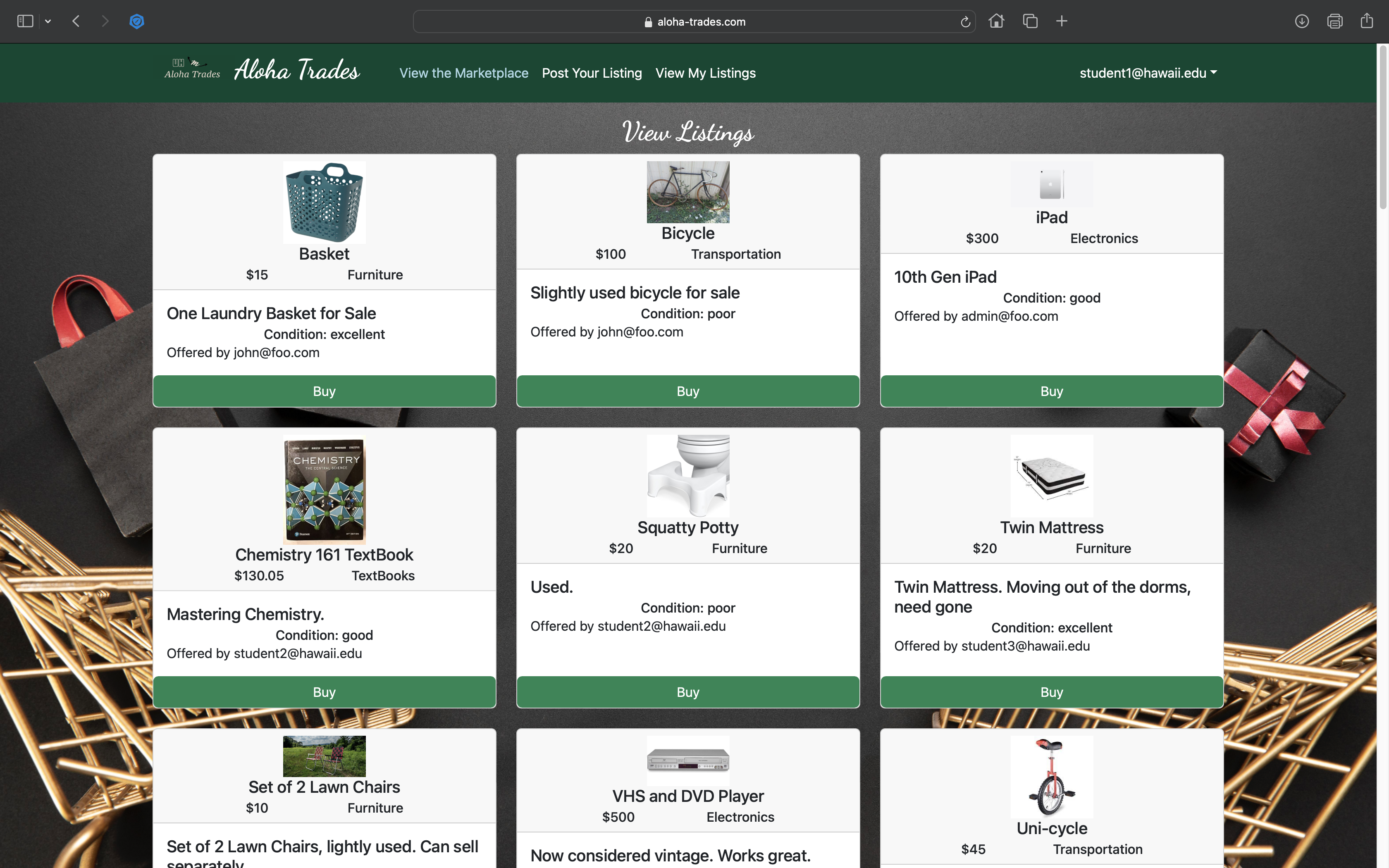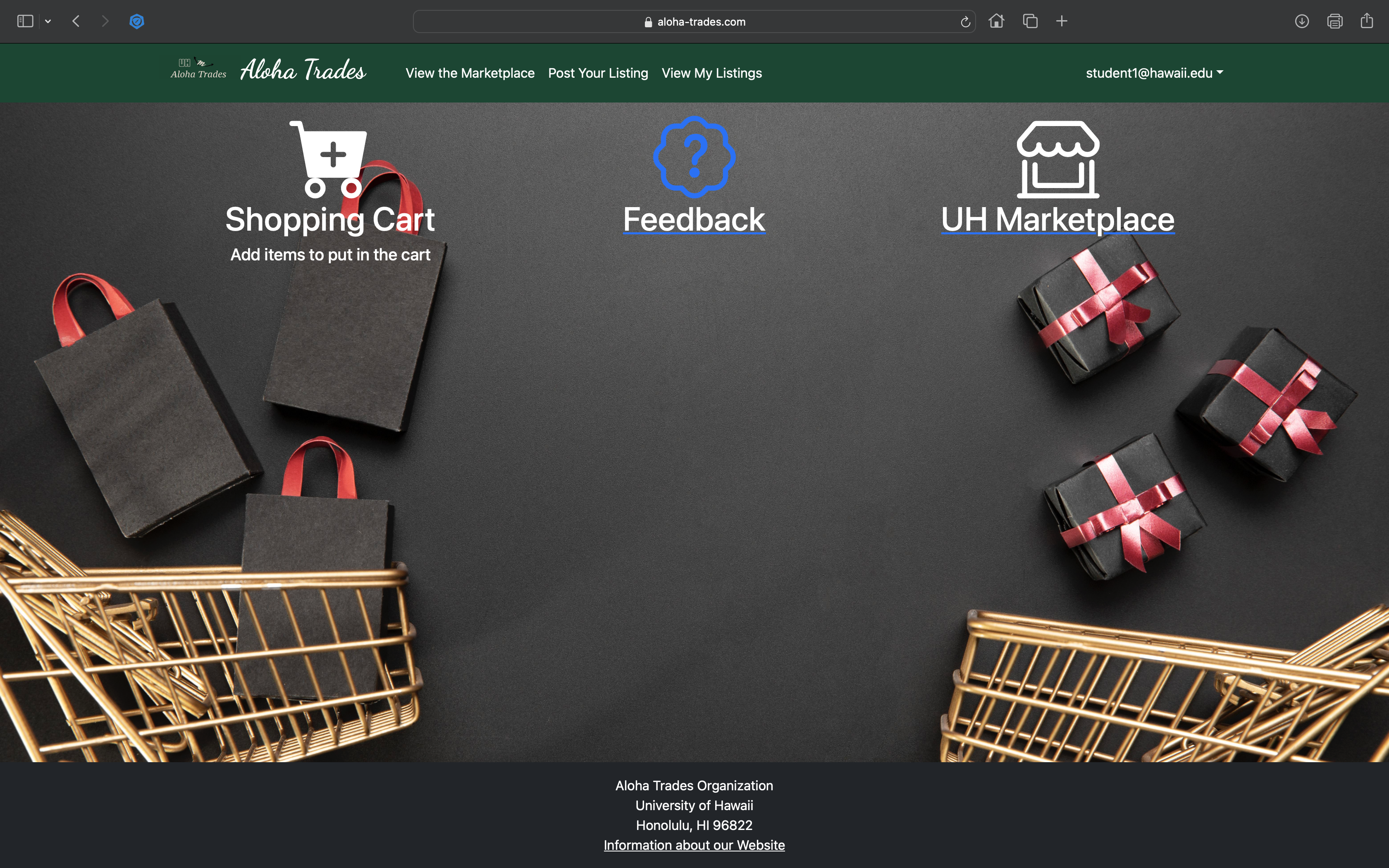Aloha Trades: A College Flea-Market Webpage

Aloha Trades
Purpose
We started with the customer's demands: a prompt for a final project which outlined a meteor-react template to use and the need for a student-only flea market webpage. The description sounded like Craigslist, but would be limited to transactions between students/faculty of the University of Hawaii. As students/faculty move out of their dorms or finish a semester, there is often a need to dispose of items that are only gently used, or would find a better home in the hands of the next round of students moving in.
The prompt drove us to take the template and implement certain restrictions. We wanted a narrow scope of categories for items. We wanted users to only be able to sign up if they have @hawaii.edu email domains. We had to ensure that anything posted as a listing was reviewed and approved by an administrator, in order to mitigate the potential for inappropriate or unauthorized listings ever being visible to users.

My Contributions
I spent a lot of time ensuring that the backend functionality was realistic. By that I mean that we worked with groups of listings that had to be heavily restricted and dependent on valid property types to provide the user with a functional experience. For example, Clicking View My Listings had to ensure that the listings were only those of the user. Clicking Marketplace produced listings that were: available for purchase, approved, and not belonging to the user browsing the marketplace. For the admin, functionality was provided to view the approval status, and change to make a post approved. The team I worked with did a great of handling the frontend design and user experience for signing in, signing up and the aesthetics of the landing pages.

Lessons Learned
My team learned early on that we had to plan and be on the same page when working on our webpage. We all went home on the first day of the assignment and started coding. When we met back up again, we realized everyone in the team had a different vision for how the listings would work, how purchasing would take place, how signing in would be handled. Every idea had branched off into 4 separate directions. Most of our initial code had to be scrapped because our ideas were different and incompatible. By implementing an Agile Project Management workflow, we managed to build a flowchart of the experience we watned to create. Next, we divided the tasks up into the upcoming milestones and ensured we let everyone know that changes were on-going or completed.